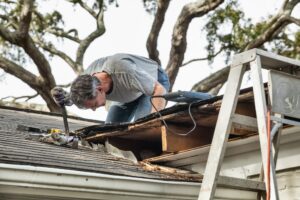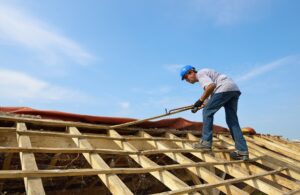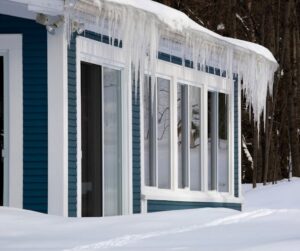If you had a cool roof installed on your home a few years ago, you may be frustrated to find that it’s not quite as efficient as when it was brand new. If this happens to you, don’t despair; the issue may be easy to fix. Your roof may just need a bit of maintenance or may have a problem with ventilation that keeps it from rejecting as much heat as usual.
Here are some steps to take if you feel your cool roof hasn’t been performing as well as usual.
1. Recoat Roof Surface
A cool roof coating is a common and relatively easy way to help boost the thermal reflectivity of your roof material. If your contractor applied a cool roof coating on the roof after installation, you’ll need to have the coating reapplied periodically. If the last application was around ten years ago, this may be the answer to any inefficiencies.
Fortunately, recoating a roof with a cool roof coating is typically a relatively quick job for a roofer. It’s not recommended as a DIY project, though, so be sure to contact your roofing contractor if you suspect the coating is the problem.
2. Clear Air Vents
After checking whether the roof needs to be recoated, check the roof and attic vents to make sure the air is flowing freely through. Often, cobwebs or bird nests can block these vents if you don’t keep an eye on them. If air can’t flow along the underside of the roof, heat can build up in your attic more easily and from there travel down into your home.
In addition, check the eaves to make sure you don’t have insulation or boxes of stored items piled up near the vents. These can also reduce airflow. If your vents are clear and your roof still isn’t getting enough airflow (condensation on the roof deck is one sign of this problem), talk to your contractor about adding more vents.
3. Top Up Insulation
Attic insulation is the main barrier that keeps heat from transferring out of the attic and down into your home. If you’ve had a pest problem in your attic, the insulation may be damaged and may need to be replaced. If the insulation is simply getting old, it may have started to compress and may need to be topped up with additional insulation.
Be sure to check for any damaged or wet insulation and remove it before adding new insulation. If you have a metal roof, you may also have insulation between the metal roofing panels and the roof deck.
4. Check for Moisture
Moisture control is an essential part of keeping your home energy efficient. Water is a great conductor of heat (compared to air alone), so you don’t want extra moisture in your attic, whether in the air as humidity or in your roof deck or insulation. Too much moisture in your attic can also damage not only insulation but also the roof deck and other elements of your roof.
Check your attic for signs of moisture under your roof. If you find mold, condensation, wet insulation, watermarks, or other signs of moisture problems in your attic, call your roofing contractor out to check for a leak or condensation problem.
5. Schedule Roof Inspection
If you’re unable to find the source of your roof’s lowered efficiency, consider calling your roofing contractor out for a professional roof inspection. A professional inspection can help find hidden inefficiencies, and a professional contractor has tools and supplies to repair any issues that may be causing the problem.
These steps can help you identify and solve some potential causes for a reduction in roof efficiency. Remember to hire an experienced, highly rated contractor to inspect your roof and make any necessary repairs. Precise Roofing & Contracting can provide a free estimate for any roofing work you may need.





